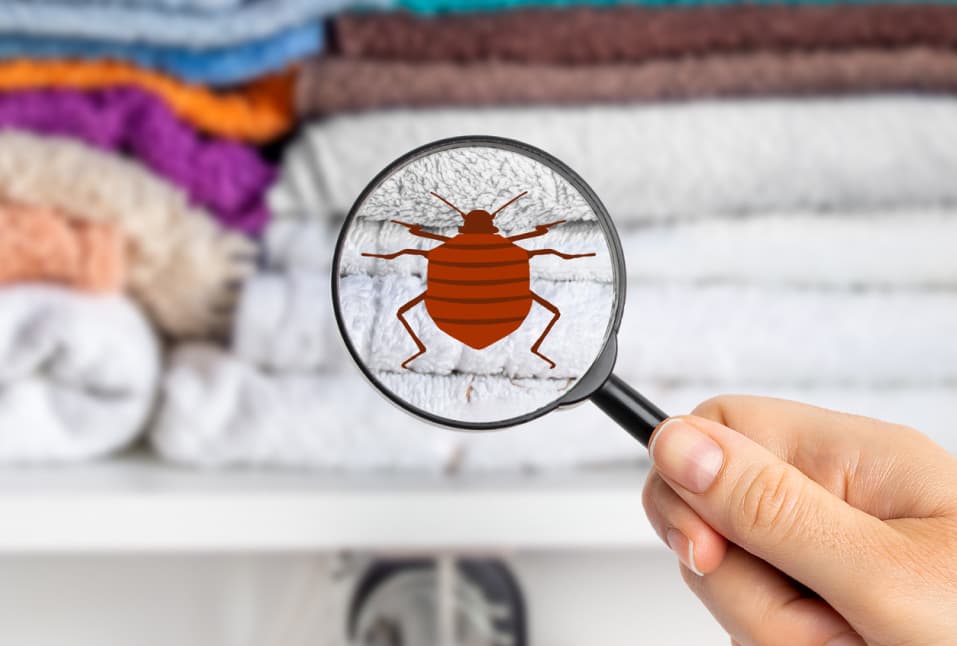Experienced DC Exterminator for Bed Bug Heat Treatment Near Me
Wiki Article
Checking Out the Science Behind Bed Pest Heat Treatments as a Lasting Insect Monitoring Technique
In the world of bug management, the mission for sustainable and efficient solutions stays a consistent quest. One such approach that has obtained traction recently is the usage of warm therapies to combat bed insect problems. By taking advantage of the scientific research behind thermal death points for these relentless insects, warm therapies provide an encouraging alternative to typical chemical-based methods. The details of how warm properly eliminates bed bugs and the wider implications for sustainable bug monitoring practices make this a topic worth checking out additionally.Bed Pest Warmth Therapy Refine

Thermal Fatality Point for Bed Pests
Exposing bed bugs to elevated temperatures beyond their thermal tolerance range is vital for accomplishing effective removal in heat treatment processes. By getting to and preserving temperatures above the thermal death factor for bed pests, parasite monitoring specialists can make certain thorough removal of bed pest populations, including hard-to-reach areas where chemical therapies might be much less efficient. Recognizing the thermal fatality point for bed bugs is essential for executing successful heat therapy methods and attaining sustainable insect monitoring outcomes.Advantages of Warm Treatments
Having developed the essential thermal death factor for bed pests, it is essential to currently explore the considerable benefits that heat treatments supply in efficiently removing these resistant pests. One of the main benefits is that warmth can penetrate deep into gaps and splits where bed bugs hide, guaranteeing that also the most hard-to-reach locations are warmed to lethal temperatures.Moreover, heat treatments are eco pleasant and safe, making them a sustainable bug monitoring technique. Unlike chemical pesticides, warm therapies do not leave damaging residues that can posture threats to human health or the atmosphere. This aspect is specifically essential in delicate environments such as medical facilities, institutions, and suburbs where chemical usage might not be preferable.
Additionally, heat treatments have a high success rate in eliminating bed bug infestations in a solitary therapy, lowering the demand for numerous visits and minimizing disruption to occupants. This performance not just conserves time and money yet additionally gives assurance to those taking care of bed insect problems.
Effectiveness of Warmth Therapy

Warmth treatments have the added benefit of eliminating bed pest eggs, which are frequently immune to typical chemical treatments. Generally, the effectiveness of heat therapies in eliminating bed insect invasions makes them a trusted and sustainable insect administration method.
Sustainable Bug Administration Perks
Carrying out sustainable insect management practices supplies lasting benefits for both the environment and public health. By making use of approaches such as warmth treatments for pest control, we can reduce the dependence on dangerous chemical pesticides that can have unfavorable results like this on communities and human health and wellness - bed bug heat treatment. Sustainable pest monitoring methods aid in protecting biodiversity by targeting specific bugs without damaging non-target organisms, thereby keeping a balanced ecosystem
In addition, sustainable parasite monitoring methods contribute to the overall health and wellness of the public. By lessening exposure to hazardous chemicals used in conventional parasite control techniques, heat therapies provide a much safer helpful site alternative for insect monitoring in domestic, business, and public spaces. This decrease in chemical use also assists in preventing chemical deposits from contaminating air, soil, and water, securing ecological quality.
Final Thought
Finally, bed insect warm therapies have been shown to be a sustainable and efficient bug monitoring strategy. The thermal death point for bed pests makes them susceptible to heat treatments, which have many advantages over traditional chemical treatments. The performance of heat therapies in removing bed bug problems while reducing ecological influence highlights the potential of this method as a sustainable service for bug control.The bed pest warmth therapy process includes increasing the temperature level within ravaged locations to a degree that effectively eliminates bed bugs and their eggs. By reaching and maintaining temperature levels over the thermal death point for bed insects, bug administration experts can make sure detailed elimination of bed insect populations, consisting of hard-to-reach locations where chemical therapies might be much less efficient. One of the main advantages is that warmth can pass through deep right into gaps and fractures where bed pests conceal, making sure that also the most hard-to-reach areas are heated to dangerous temperature levels. Unlike chemical treatments that read may leave behind immune populaces, warm treatments supply a safe and ecologically friendly solution that can pass through deep into furniture, wall surfaces, and other hard-to-reach areas where bed pests hide.
The thermal death point for bed pests makes them prone to warm treatments, which have countless advantages over traditional chemical therapies.
Report this wiki page